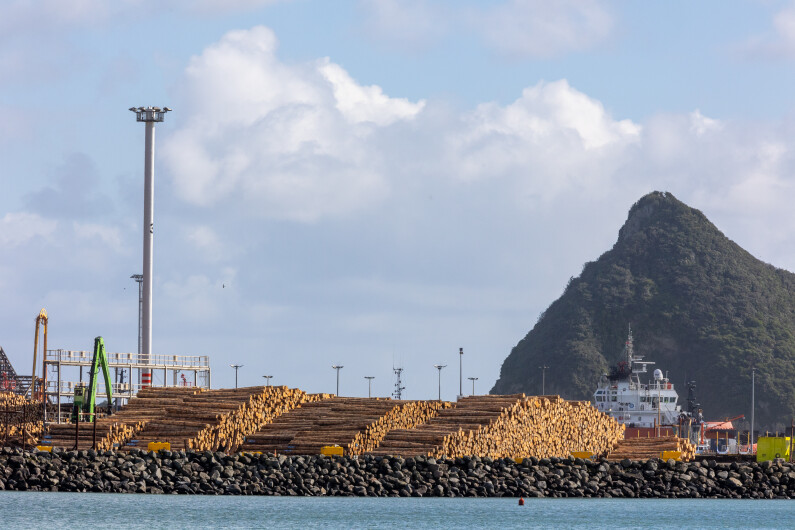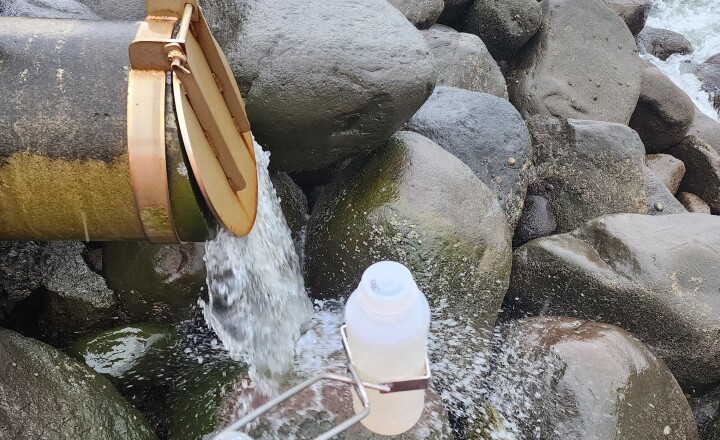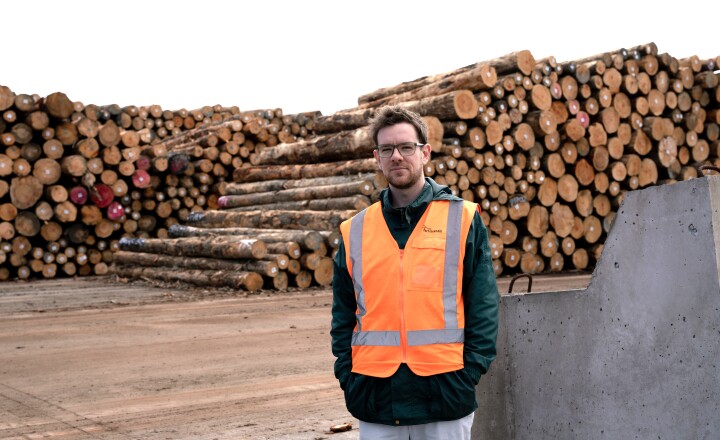
Port Taranaki’s growing log trade has hit a new high, with 1 million JAS of logs exported from the port in the current financial year.
It is the first time Port Taranaki has reached the 1 million mark, which ticked over on Sunday when regular visitor, the Ken Rei, loaded just under 14,000 JAS (Japanese Agricultural Standard tonnes). The 2020-21 financial year ends on 30 June.
“It’s a big achievement and we’re proud to have reached this milestone,” Port Taranaki chief executive Guy Roper said.
“With forestry exports worth more than $6 billion to New Zealand annually, the industry is incredibly important to the nation’s economy and the region’s economy.
“Port Taranaki is the key gateway for log exporters sending the region’s product to international markets, so we’re pleased to be able to play an integral role in support of this increasing trade,” he said.
Mr Roper said reaching the 1 million JAS mark had been the culmination of a number of factors.
“It is the result of forests in the region and further afield reaching maturity, the long-term work that we have done alongside our export customers, marshallers and stevedores to improve at-port services and efficiencies, and a recent increase in demand for New Zealand logs, which has seen an improvement in returns for forest owners,” he said.
Aside from 2019-20, when low commodity prices and COVID-19 had a marked impact on the industry, in recent years Port Taranaki has reported record year-on-year growth in log volumes.
To achieve this, it has actively worked to develop and accommodate the export log trade through initiatives such as:
- The redevelopment of Blyde Wharf to become a log storage area adjacent to the log vessel moorings, providing more storage space for exporters.
- Facilitating the installation of an on-port log debarker, which has helped bring logs from further afield and enabled full vessels to now be loaded at Port Taranaki and head directly to international markets.
- Continuing to support growth in the logs-on-rail service, which has helped to increase Port Taranaki’s reach further south into the Whanganui area.
“This work has enabled us to increase our hinterland and ensure that logs that might have gone elsewhere are coming to Port Taranaki,” Mr Roper said.
“The combined efforts of the marshalling and stevedore companies and our own people to meet this logistics challenge, thereby facilitating increased turnover and more log vessel visits, has been outstanding.”
As log volumes at the port have increased, Port Taranaki has worked to ensure the trade has as little impact as possible on the environment.
It has upgraded stormwater systems, including installing separation units to prevent log and bark particles from entering the harbour, and employed a fulltime site management coordinator, who organises, schedules and leads the systematic clean-up of the operational area. In addition, the bark from the debarked logs is recycled by a local landscaping supplies company.


